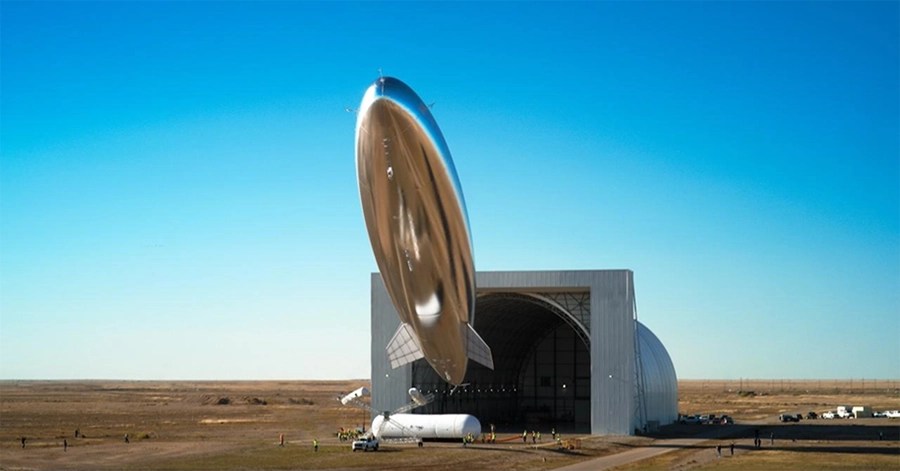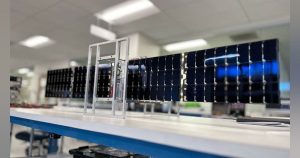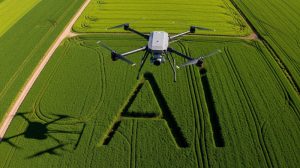SoftBank’s Bold Leap into the Stratosphere: Launching Pre-Commercial HAPS Telecommunications in Japan by 2026
Imagine a world where your mobile signal originates not from a nearby cell tower or satellite, but from a futuristic airship drifting in the stratosphere, more than 20 kilometers above Earth. This is the vision SoftBank is making a reality, aiming to launch pre-commercial High-Altitude Platform Station (HAPS) telecommunications services in Japan by 2026.
This ambitious initiative has the potential to revolutionize disaster response, drone connectivity, and rural internet in Japan, and possibly, the entire globe. Here, we delve into the specifics, the underlying technology, and the implications for businesses, tech enthusiasts, and everyday users.
What Are HAPS and Why Should You Care?
High-Altitude Platform Stations, or HAPS, are essentially mobile towers that hover in the stratosphere. These are either airships or drones powered by solar energy, positioned above commercial air traffic but beneath satellites. Unlike conventional satellites, HAPS operate from altitudes of 20–25 kilometers, offering rapid, low-latency connectivity to regions beyond the reach of traditional networks.
HAPS vs Satellite vs Traditional Towers
| Feature | HAPS | Satellites | Cell Towers |
|---|---|---|---|
| Altitude | ~20-25 km | 400–36,000 km | Up to ~100 m |
| Coverage | Huge (100–300km radius) | Global/continental | Local |
| Latency | Very low | Medium to high | Very low |
| Deployment speed | Weeks or less | Years | Months |
| Maintenance | Accessible | Complex | Simple |
| Use cases | Remote, disaster, sky-based (drones) | Broad media, IoT | Dense urban, suburban, highways |
This is vital for Japan, a nation with numerous mountainous regions, remote islands, and a high frequency of natural disasters, necessitating adaptable and resilient infrastructure. HAPS are poised to provide dependable connectivity where ground networks fail or are slow to recover post-disaster.
The SoftBank-Sceye Partnership: Reinventing Sky-Based Internet
SoftBank has long been a leader in non-terrestrial networks, with initiatives like Alphabet’s Project Loon and extensive investments in lighter-than-air (LTA) and heavier-than-air (HTA) HAPS solutions. Now, SoftBank is advancing this expertise by:
- Committing $15 million to Sceye, an American aerospace firm renowned for its zeppelin-like HAPS platforms.
- Collaborating with Sceye to initiate a pre-commercial HAPS test flight over Japan in 2026.
- Piloting LTA airships and HTA drones, such as their Sunglider project, for diverse applications.
Sceye’s innovations have already resulted in successful 24-hour stratospheric trials, showcasing their potential as reliable “floating cell towers.”
Why Did SoftBank Choose Sceye?
According to SoftBank’s President & CEO Junichi Miyakawa, “The stratospheric-based, wide area telecommunications of HAPS will be essential for extending network reach to challenging locations and restoring communications promptly after major disasters.” Sceye’s technical expertise and recent milestones were pivotal in this partnership.
Key Benefits and Use Cases
1. Disaster Resilience
In Japan, a country often hit by natural calamities, HAPS can provide rapid communication recovery post-disasters, supporting emergency services, hospitals, and residents by overcoming ground network disruptions.
2. Bridging Connectivity Gaps
From Hokkaido’s mountains to Okinawa’s islands, some areas in Japan struggle with inconsistent or costly internet access. HAPS provide an efficient solution by filling these gaps and promoting connectivity in remote regions.
3. Enabling 3D Networks for the 6G Era
SoftBank envisions a future filled with aerial technologies like drones and flying cars. HAPS will form the backbone of 3D telecommunications networks, supporting a vast range of aerial and mobility-oriented applications.
4. Rapid Deployment Capability
Unlike satellites, which require years to build and launch, HAPS can be deployed much faster, making them ideal for spontaneous events or emergencies that demand immediate increased connectivity.
The Technology: How Does HAPS Work?
SoftBank employs a hybrid model:
- Lighter-than-air (LTA): Large airships powered by solar energy such as those developed by Sceye can remain stationary for extended periods, covering large areas.
- Heavier-than-air (HTA): Solar-powered drones like Sunglider orbit above, providing consistent signals.
These platforms host miniaturized telecom equipment, solar panels for autonomous power, and advanced navigation systems.
What Does “Pre-Commercial” Mean?
Pre-commercial denotes advanced testing phases that go beyond laboratory environments but aren’t yet ready for full-scale public deployment. By 2026, SoftBank plans to:
- Conduct operational test flights across Japan
- Provide real-world connectivity to select areas
- Collect pertinent data to refine and enhance the service for larger rollouts
Early users such as emergency responders, rural broadband initiatives, and drone operations will be among the first to experience HAPS in action.
Expert Perspectives and Industry Momentum
SoftBank’s HAPS venture is not just about cutting-edge technology but represents a strategic opportunity:
- Integrating HAPS with satellite and ground networks, SoftBank offers robust, always-active coverage.
- Sceye’s systems are equipped for environmental monitoring, providing real-time data on concerning issues like forest fires and air quality.
- Sceye’s CEO Mikkel Vestergaard Frandsen sees this alliance as a pioneering step towards utilizing the stratosphere to tackle global challenges.
Human Stories: Who Benefits?
- Remote students gain reliable internet access for online education.
- First responders ensure seamless communications after major disasters.
- Drone delivery services can rely on uninterrupted, sky-based connectivity.
- Tech innovators will find new opportunities to develop apps and services.
Challenges and What’s Next
Despite its promise, HAPS faces challenges:
- Weather conditions: Stratospheric winds demand robust, autonomous designs.
- Regulatory hurdles: Japan’s aviation and telecom regulations must adapt to these progressive infrastructures.
- Scaling challenges: Expanding from pilot projects to nationwide deployment necessitates significant investment and continuous innovation.
With successful trials and robust investment, the step towards 6G promises a bright future.
Why This Matters—For Japan and Beyond
As a starting point in Japan, this technology offers worldwide potential. As advancements bring us closer to fully operational 6G networks, HAPS will:
- Become a staple in telecom strategies globally
- Encourage international alliances as other nations take cues from SoftBank and Sceye
- Usher in a new era of connectivity, transforming business and community interactions globally
Conclusion: The Sky Is No Longer the Limit
SoftBank’s 2026 HAPS deployment doesn’t just upgrade technology—it transforms our connection to the digital world. For Japan, this denotes resilience, inclusivity, and potential leadership in airborne communication technologies. For futurists and tech advocates alike, it signals the arrival of our interconnected tomorrow.
Stay tuned; the skies are opening for business.













